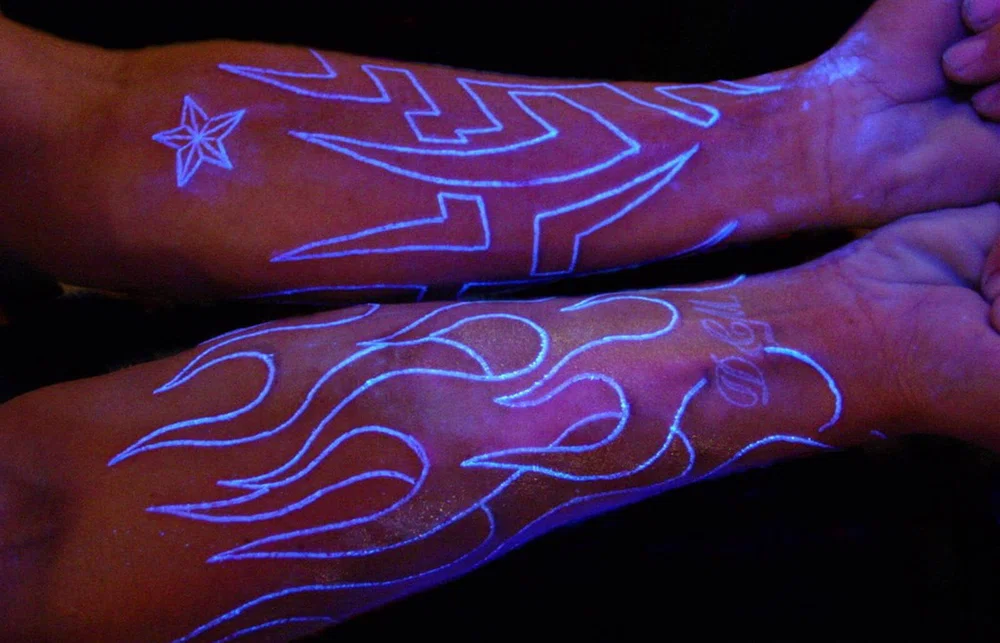Tattoo inks: composition, benefits and consequences
The result of your tattoo will depend on the choice of ink
29 May 2024
One of the fundamental factors before getting a next tattoo is the choice of ink.
This raw material will directly influence the quality of the final result of the design and also, depending on its components, there might be physical reactions, such as a skin allergy.
Tattoo ink is a substance that enters the body at the dermal level, more specifically, the needle passes through the first layer of the skin called the epidermis and is deposited in the dermis, where the capillaries absorb it.
Due to the aforementioned, its composition is of the utmost importance, since the entry of elements that are harmful to the body may cause side effects such as allergies, itching and other extremely serious conditions.
It is not only a health issue, but depending on our choice, the tattoo on our skin will look dull, bright, clear, sharp, blurred or faded. If we are clear about how we want our design to look like, we must be careful with this key factor.
That is why, today, we are going to talk about the different inks used in the tattoo sector, their components are their advantages and consequences.
Acrylic Inks
Acrylic inks, or also called mineral inks, are based on pigments derived from metals, such as arsenic, cobalt, beryllium, selenium, nickel and others.
Its main consequence is that its composition is prone to generating side effects on sensitive skin. Allergy is one of the most common reactions.
Another of its negative impacts is that its application makes it difficult for medical tests, such as the MRA, in the tattooed area. Also, compared to other inks, acrylic is the most difficult to remove through laser.
Although we list important consequences, the benefits will really make you hesitate to discard the option.
Acrylic inks are the first option for many tattoo artists since their colors are very intense, which will make the designs look vibrant and striking. But it is not only this, but theylast the longest, keeping optimal quality.

What are the elements of the main colors?
Black ink: Mainly composed of carbon. They may not contain metals, although some include phenol, a chemical substance may generate some type of allergy. In any case, it is the least harmful to the organism.
Red ink:It is considered the most dangerous, since its base is mercury, a component whose harmfulness tends to generate allergies, even long after the tattoo is made. It can be replaced by carmine ink, which is made from insects and is more hypoallergenic.
Blue ink: Composed of cobalt salts, on some special occasions in hypersensitive skin it can cause a chronic condition called granulomas, a skin rash with ring-shaped relief.
Yellow ink: Composed of cadmium and cadmium sulfate. It does not usually cause any allergies, if this happens, the intensity would be mild.
White ink: Along with the red color, it is considered high risk due to its titanium or zinc oxide base.
Green ink:Its base element is chrome. It can cause some skin reactions that lead to eczema.
Violet ink: Composed of magnesium, it is very unlikely to trigger any undue reaction on the skin.
Vegetable Inks
The advantage of vegetable inks is that they are based on organic products, and therefore adverse reactions on the skin are less likely to happen. It is considered hypoallergenic, which means that, although they are not 100% exempt, the risk of causing allergies is very low.
Another characteristic in favor is that the assimilation and absorption of our body, in comparison to acrylic inks, is much better. Last but not least, these inks are vegan, that is, they do not contain any animal ingredients.
One of the main unfavorable rumors that have been spread is that they are not that resistant over time, that is, the designs fade more easily.[1] It is also said that the applied colors don’t look that impressive, so the application of this type of ink would require more careful care than with acrylic inks. Is this true? If you want to know, visit our post Vegan tattoos: When art is awareness.

Others Inks
There are types of ink, such as the pigments used for fluorescent and ultraviolet tattoos.
Fluorescent tattoos are those that can glow in the dark without the support of external light sources. Ultraviolet inks can only be seen under UV black light. Most of these inks contain metallic pigments and on some occasions, they also include vegetable or plastic elements in their formulation.

Which ink do I choose?
The advantages of each type of ink mentioned are really tempting, although their consequences make us doubt our choice. It is important to be well-informed for more conscious choices, taking into account the result we want and considering the possible physical reactions.
Being aware of the composition of the inks you work with is essential not only to prevent unexpected reactions on the skin, but also to know which techniques heal better.
And you can learn all about them comprehensively and in-depth within our professional tattooing courses.